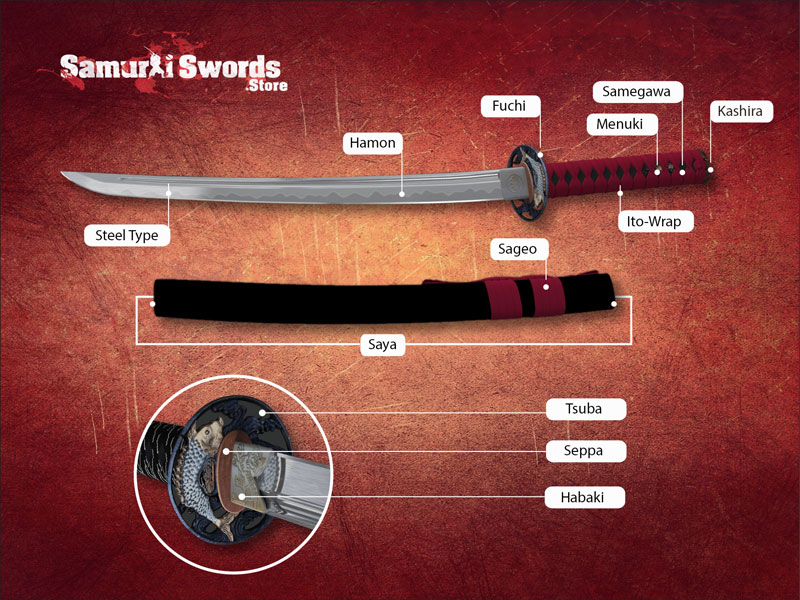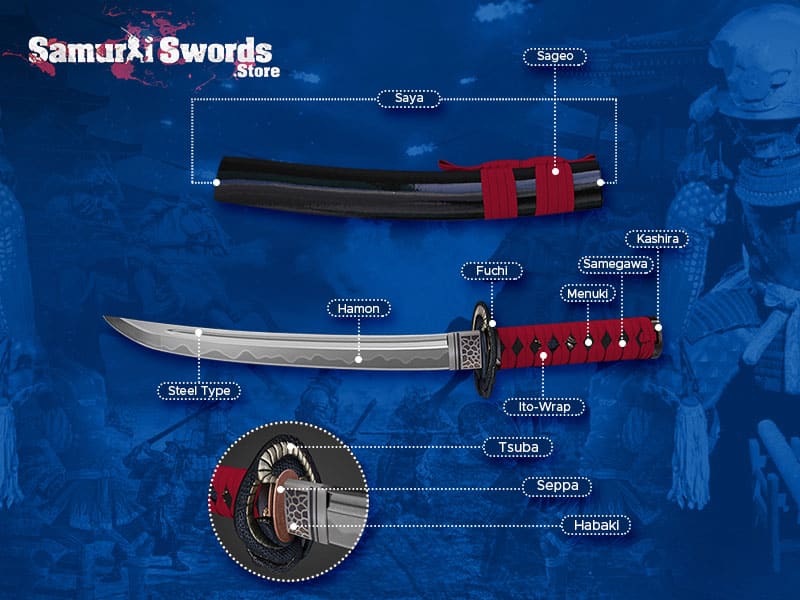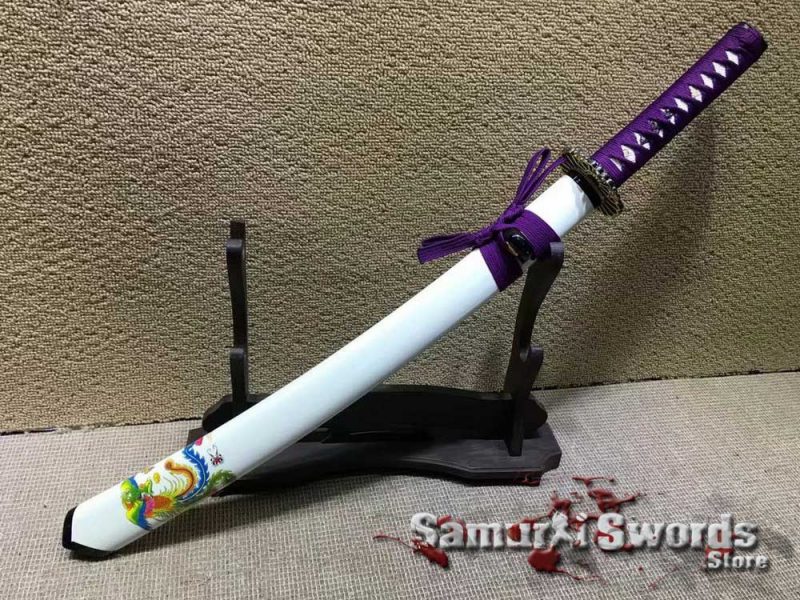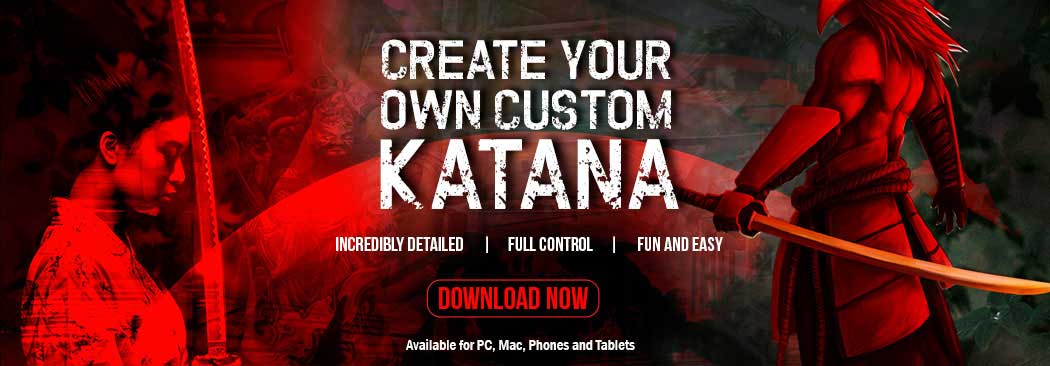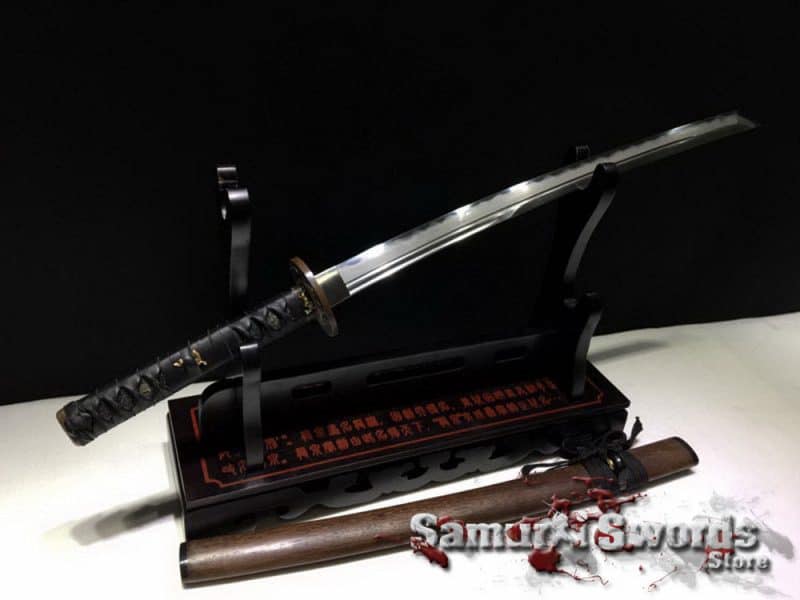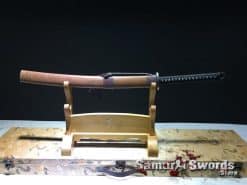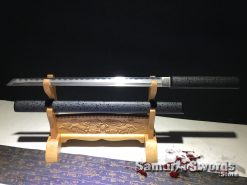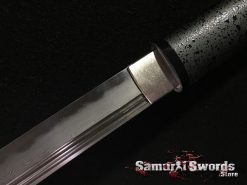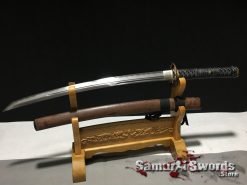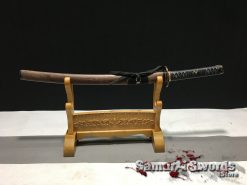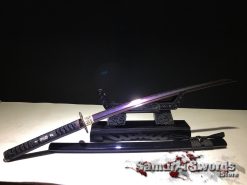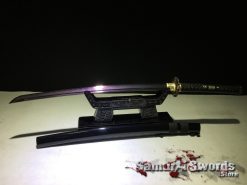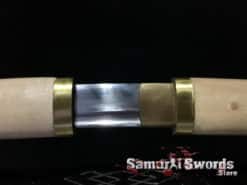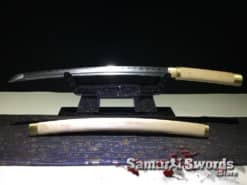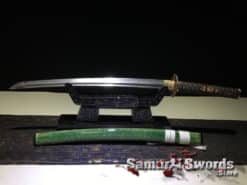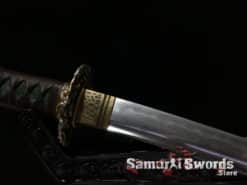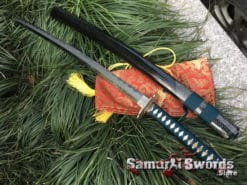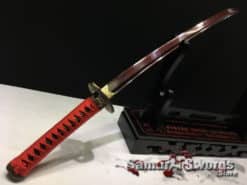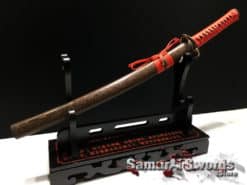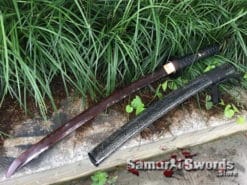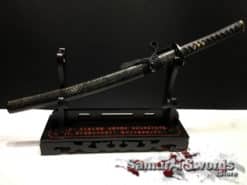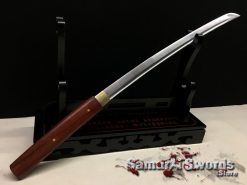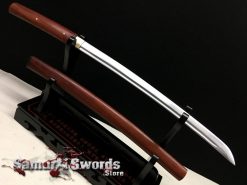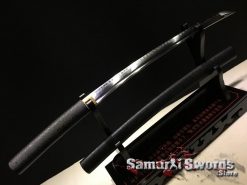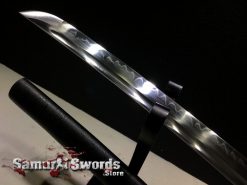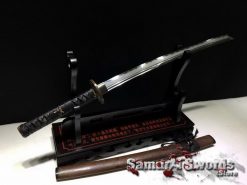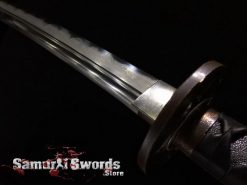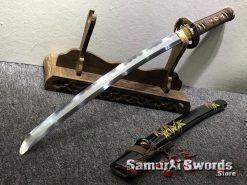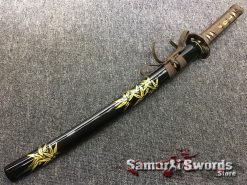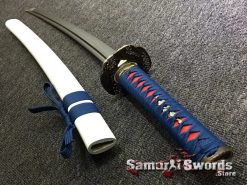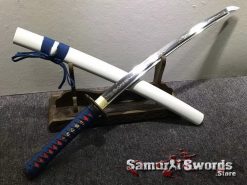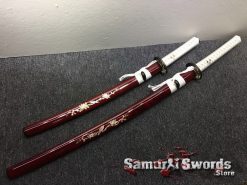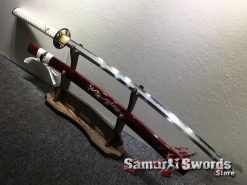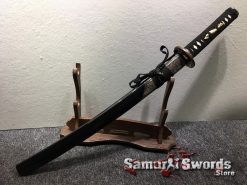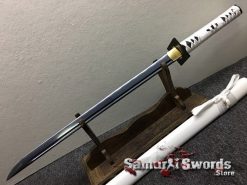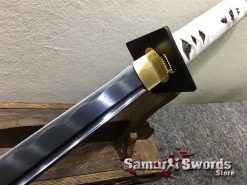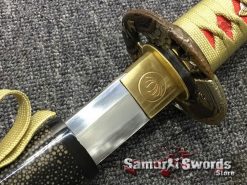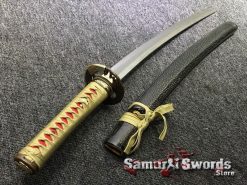Create Your Custom Samurai Sword
How to Store the Wakizashi Properly?
Proper storage of the Wakizashi requires following a few necessary precautions. Like any other Nihonto, you will need to clean this thoroughly before storing it properly. It’s a piece of art that is meticulously crafted.
Storing your Wakizashi in a climate-controlled environment is essential. When exposed to humidity and fluctuating temperature, the sword has a higher risk of acquiring rust and corrosion.
Basements and attics aren’t recommended areas to store your Wakizashi since these places are usually hot and humid. Installing a dehumidifier is one way you can prevent moisture in the air from damaging your sword’s blade.
Applying protective oil on the blade allows for long-term storage. The preferred oil is Choji oil, which consists of clove oil extract and a small amount of mineral oil. Applying oil forms a layer of protection to keep it safe against rust and corrosion.
It would be best if you also stored the Wakizashi horizontally in its sheath. The curve should face down, and its edge should face up to maintain its edge and protect it from wearing.
An alternative option is to store this in a particular carrying case. However, this will require protective padding to retain the blade’s sharpness and prevent it from getting dull.
Most importantly, always keep the Wakizashi clean, and never store this in its sheath while it’s dirty. Even a fingerprint smudge, oil and compounds can react with the blade and form rusts, which potentially damages it.
Before storing the Wakizashi, clean and polish it, then wipe Choji oil on the blade to provide protection.
When you store your Wakizashi, make it a habit to take it out of sheath regularly. Keeping it in an air-tight case may cause the formation of molds if you never remove it from its storage. Take it out once every few weeks to inspect the blade and let the air out.
When did the Samurai Start Using the Wakizashi?
The Samurai began using the Wakizashi as early as the 15th or 16th century. They utilized this as an auxiliary sword for beheading their defeated opponent, or for committing Seppuku or ritual suicide. It was an excellent sword for close-range combat.
The Wakizashi was the backup weapon of the Samurai in case their Katana got lost or damaged. It was highly efficient for indoor combat. Other swordsmen like Miyamoto Musashi utilized both swords simultaneously, increasing the advantages in battle.
Although the Samurai used the Wakizashi as early as the 1600s, it was not yet known by its name. In the early years, any sword that measured within a certain length was referred to as the Wakizashi.
Years later, its quality improved, and it became the choice of backup weapon for the Samurai.
Since the Katana was the primary sword of the Samurai, they did not use this for beheading their opponents. Doing so would damage the blade, so they used the Wakizashi instead. Also, the sword was for cutting and slicing the body’s weaker parts.
In the 17th century, the Samurai started using the Wakizashi for committing Seppuku. They performed this when their opponents defeated them to die with honor and avoid torture. In some cases, it was a form of capital punishment for grave offenses.
Seppuku was an elaborate ritual that the Samurai performed in front of spectators. They also followed certain steps and ceremonies when doing this.
The Samurai never left their Wakizashi. They usually slept with this sword since it allowed for easy access and quick drawing when necessary. When entering another residence, they left their Katana with a servant and brought the Wakizashi with them.
According to some historians, the Wakizashi was comparable to a modern-day soldier that carried a pistol. It was not a primary weapon, but it was something they always brought with them.



